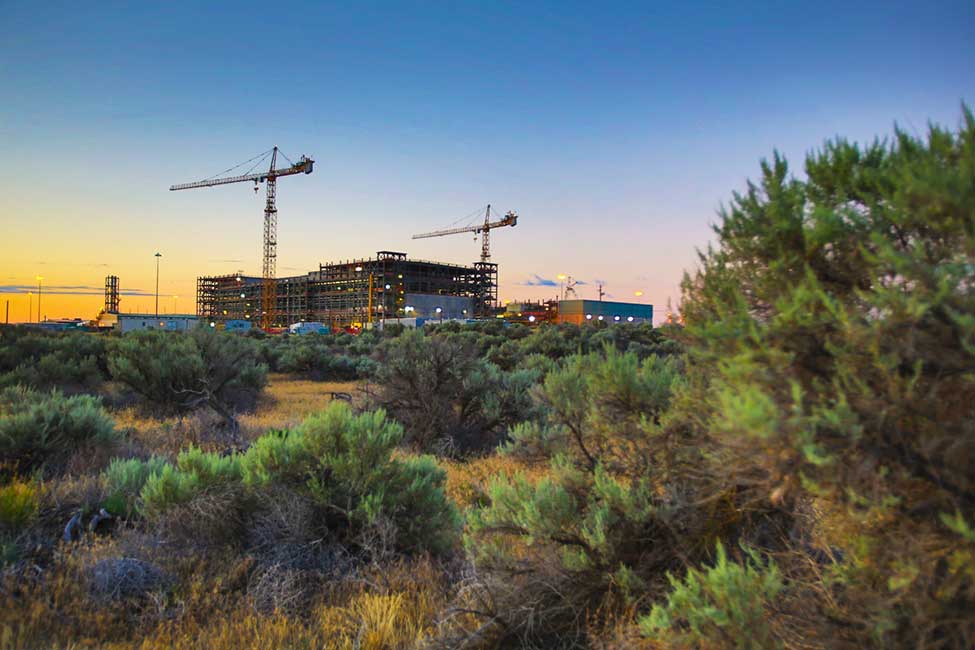
Key components of the $17 billion Waste Treatment Plant at the Hanford Site in Washington state might miss the current deadline to begin operation, the U.S. Energy Department acknowledged this week.
The Energy Department “cannot project with certainty” when the High-Level Waste Vitrification Facility and the Pretreatment Facility will be completed, Brian Vance, manager for both DOE offices at Hanford, wrote in a Wednesday “notice of serious risk” to Maia Bellon, director of the Washington state Department of Ecology.
The notice is being filed in “an abundance of caution” due to a variety of factors, including some unspecified “technical issues” at the Pretreatment Facility and DOE’s short-term priority of treating low-activity waste first, the Hanford official said in the letter.
Under a 2016 federal court consent agreement, Waste Treatment Plant contractor Bechtel National must “demonstrate” the ability of both facilities to work with radioactive waste in 2033 and reach full operations by 2036. Under the consent decree, the Energy Department must notify the state when it determines one or more milestones are at risk of not being met, Ecology spokesman Randy Bradbury said in a Thursday email. Both milestones are in doubt.
“We’re still reviewing the notice and its implications,” Bradbury said. The state agency spokesman and others with knowledge of the situation emphasized that Bechtel and DOE remain on track to start treating low-activity waste no later than 2023, which is also under the consent decree.
The Waste Treatment Plant being built by Bechtel will convert much of the 56 million gallons of radioactive waste stored in underground tanks at Hanford into a stable glass form for disposal.
The vitrification plant is no stranger to delays. Bechtel and the Energy Department once thought WTP would begin treating both high-level and low-activity waste around 2020. But DOE suspended much of the work on WTP’s high-level waste facilities in 2012 after a whistleblower at a Bechtel subcontractor raised safety concerns about the proposed technical approach for HLW treatment.
The Energy Department in 2012 adopted a phased waste treatment strategy to begin treating some low-activity waste before solving all WTP technical problems. During the first phase of this strategy, DOE plans to implement a Direct Feed Low-Activity Waste (DFLAW) approach to move some low-activity waste from storage to the WTP’s Low-Activity Waste Facility for vitrification before the Pretreatment Facility is finished.
Since last October, the state and federal agencies have held regular integrated workshops about the “high-level waste tank treatment mission” at Hanford, Vance wrote. In April and May, Hanford DOE officials started an “analysis of alternatives” on treating the tank waste. Last month, the analysis team asked to study more alternatives – not identified in the letter – which will take additional time.
The Vance letter did not go into detail on how the various issues might cause schedule delays or how much time might be lost. The Energy Department is questioning if there is a better means to prepare the high-level waste for treatment than sending it to the vit plant’s Pretreatment Facility, the Tri-City Herald reported Wednesday.
Milestones for the HLW and Pretreatment Facilities remain more than a decade away, Vance said in the notice. Variables that can affect the schedule include congressional appropriations, technical advances, contractor efficiency, and “further practical experience with vitrification” at both the Savannah River Site in South Carolina and the Hanford WTP Low-Activity Waste Facility, he added.
The Energy Department official said he looked forward to upcoming discussions “regarding our shared objective of advancing this difficult cleanup.”
The state Ecology Department talks weekly “at the program level” with local DOE managers, Bradbury said. The two agencies are exploring “more formal, higher-level discussions. But nothing has been scheduled yet.”
In a May letter to the then-head of DOE’s Office of Environmental Management, Anne Marie White, Bellon asked for a “frank discussion” about tank waste cleanup challenges at Hanford.